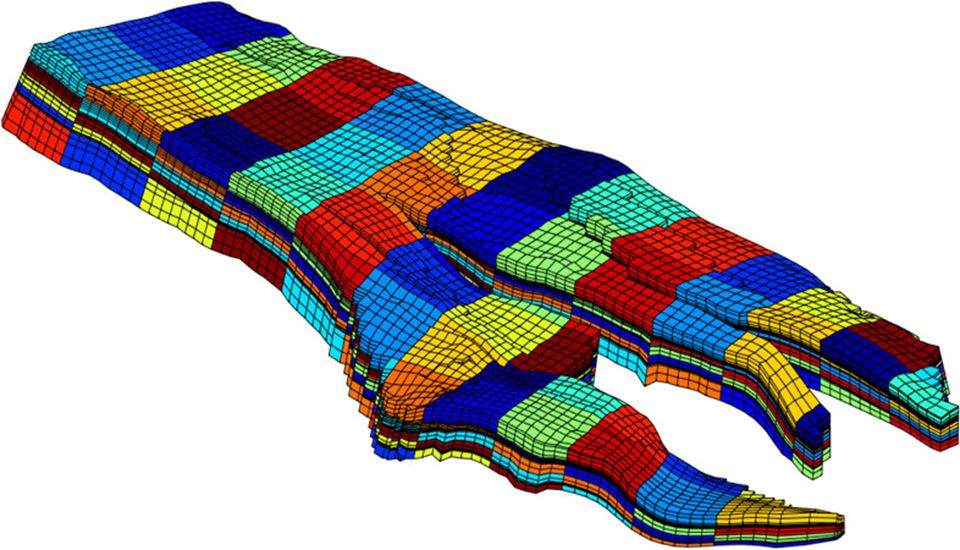When researchers want to imitate processes taking place in a greater or smaller part of the real world, they have to use simulators or so-called “simulation models”. So that these models will do what they are supposed to, a programming code has to be built in.
Programming is a time-consuming process, and it may take many years to develop even a basic simulator. Researchers want to simplify this process.
“We’ve created a language similar to the language of mathematics”, says SINTEF’s André Brodtkorb. “This allows us to subdivide the work process in such a way that reduces the time it takes to develop a simulator”, he says. “A mathematician can focus on what he or she knows best – the simulator’s area of application. Programming experts, on the other hand, can sit and work with “the translator” in order that the translated code can run faster. They don’t have to worry about the application”, says Brodtkorb.
FACTS:
- The operative system Microsoft Windows is written mostly in the programming language C++. Java is another familiar language.
- The project "Simulators that write themselves" was a two-year project funded in-house by SINTEF IKT, and was terminated on 1 January 2015.
- The language developed by the researchers is called Equelle. Visit the website http://equelle.org/, and you can play with the language using the browser.
Simulating oil and water
At SINTEF’s Department of Applied Mathematics, researchers are developing methods and new ways of computing everything from weather forecasts for airports to the tactical formations of Premier League football teams.
In this project, they’re concentrating on two applications – the way in which oil flows within its natural reservoir, and the way flood waves spread across a landscape. The source codes are used to develop simulation tools that can predict what happens to the oil in the reservoir and where the greatest volumes of flood water occur.
“A reservoir is a rigid sponge containing oil”, explains Brodtkorb. “In order to simulate the oil recovery process we divide the reservoir up into small segments or cells and describe how the oil migrates from cell to cell.

Simulation of pressure distribution in the Norne field offshore Helgeland. In order to simulate the oil recovery process, researchers divide the reservoir up into small segments or cells and describe how the oil migrates from cell to cell. The data for the model have been made available by Statoil and the NTNU/IO Centre. Illustration: SINTEF
These things take time
It is common during the construction of a simulator to involve many people in the development of the programming code which instructs the computer how to do its job. These include mathematicians, physicists, numericists and programmers.
“The problem is that they all have their own respective core skills”, says Brodtkorb. “Those writing the source code for the simulator aren’t necessarily fully aware of what the mathematicians and physicists are doing – and vice versa”, he says. “And when people from different fields are trying to reach agreement, misunderstandings arise and things take time”, he says.
“The major software companies generally have all the expertise they need in-house. But most research codes are developed by single individuals or small teams – and they need help”, says Brodtkorb.
Watch video: https://www.youtube.com/watch?v=lf9BJ2UU3Tw
Removing security errors
Making simulators is in itself nothing new. The innovation the researchers want to introduce is the use of a domain-specific language – a precise language that focuses on a closely-defined area of application. Such a language will allow them to develop new simulation programmes and at the same time guarantee that the code is correct.
For example, in the field of programming there is a classic problem linked to selection of the correct units used to describe physical quantities. The Mars Climate Orbiter, launched by NASA to study the Martian atmosphere, crashed on the planet in 1999. The reason was that the company Lockheed Martin had developed a simulation model using imperial units when NASA was expecting them to deliver in metric.
“The error caused 327 million dollars to go up in smoke”, says Brodtkorb. “We’ve built in safeguards to prevent this kind of thing from happening. For example, we write statements such as ‘this unit is in metres’ into the source code. If someone then attempts to introduce a non-SI unit such as ‘foot’, they will get an error message”, says Brodtkorb.

The Mars Climate Orbiter, launched by NASA to study the Martian atmosphere, crashed on the planet in 1999. The reason was that the company Lockheed Martin had developed a simulation model using imperial units when NASA was expecting them to deliver in metric. Illustration: Mars Climate Orbiter, Wikipedia.
“Even if something goes wrong, the result may nevertheless appear to be correct. If this happens, things can really go haywire and decisions may be taken on false premises”, says Brodtkorb. “But in our system the possibility of errors such as these has been eliminated”, he says.
The researchers are currently applying for funds to further advance their project.
“We have great faith in the substance of this project”, says Brodtkorb. “Our new programming language is easy to use, it takes less time to write programmes, and the sources of error have been removed. Three good sales arguments, don’t you think?” he says.

